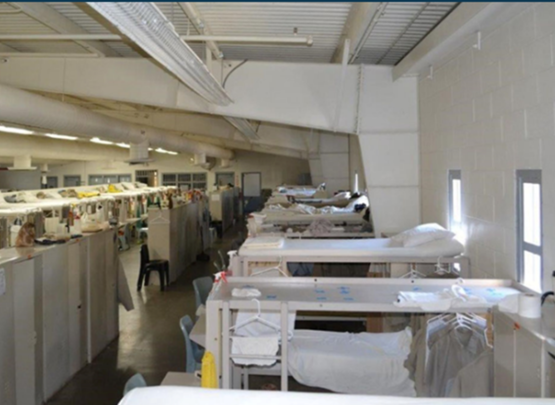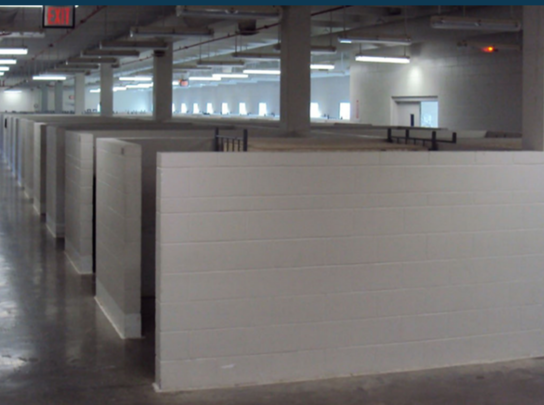Key Insights: COVID-19 in Correctional and Detention Facilities
Prisons present unique challenges in the prevention and control of COVID-19 after it has been introduced into a prison facility. Compared to the general population, a larger percentage of COVID-19 outbreaks and deaths occur in jails, prisons, and detention facilities across the country. The Centers for Disease Control and Prevention (CDC) has noted that the confined nature, combined with crowding, increases the possibility of COVID-19 spreading once it is found in a facility. Individuals typically eat, sleep, and engage in activities in close quarters. Considering the increased risks, several Offices of Inspectors General have published reports on how federal agencies have handled the COVID-19 pandemic within correctional and detention facilities. Read the full COVID-19 Insights in Correctional and Detention Facilities report here.
Social Distance, Quarantine, Isolation
Enforcing social distancing among inmates, quarantining those who might have come into contact with COVID-19, or isolating people who might have COVID-19 is hard due to the lack of space in prisons. Inmates and detainees are often sleeping in large rooms with rows of bunk beds, with or without partitions. Restrooms and commons areas are shared.
The Department of Homeland Security (DHS) Office of Inspector General (OIG) found that 30% of Border Patrol stations (38 of 136 surveyed) and 5% of Office of Field Operations ports of entry (16 of 307 surveyed) were not able to carry out social distancing due to limited space. The DHS OIG further noted that 11% of Immigration and Customs Enforcement (ICE) detention facilities did not have capacity to isolate detainees with suspected COVID-19 symptoms.
Photo: An open dormitory housing unit at Lompoc Federal Correctional Complex. Source: BOP, with DOJ OIG enhancement.
Overcrowding
The size of prison populations can limit a facility’s ability to reduce the spread of COVID-19. Several federal programs sought ways to cut down on the overcrowding. The Department of the Interior (DOI) OIG’s survey of Indian Country detention facilities found that 24% of responding facilities (14 of 59) reported overcrowding. One way these facilities tried to reduce overcrowding was by working with tribal courts to amend sentences or grant early releases or home confinements for inmates charged with certain nonviolent crimes. Under the Coronavirus Aid, Relief, and Economic Security (CARES) Act and Attorney General authorization, the Bureau of Prisons (BOP) transferred some of the eligible inmates from prison to home confinement.
Photo: A partitioned open dormitory housing unit at Coleman Federal Correctional Complex. Source: BOP, with DOJ OIG enhancement.
Keeping Prisoners Safe and Healthy
Longstanding staffing shortages at correctional and detention facilities worsened during the pandemic and blocked some facilities’ ability to respond to COVID-19. These shortages at some BOP institutions made it difficult to prevent the spread of COVID-19 and provide medical care to inmates. The DOI OIG found that already low staffing levels at Indian Country detention facilities limited staff’s ability to focus on security.
Moving inmates and detainees between facilities or to local hospitals has also presented challenges for prison communities. The Department of Justice (DOJ) OIG reports identified incidents at two BOP institutions in which staff transported sick inmates to local hospitals without wearing the appropriate personal protective equipment, which potentially contributed to the spread of COVID-19 at one of the institutions. BOP inmates in residential reentry center custody also present risk of exposure concerns, as they must rely on public, commercial, or personal transportation when they first report to these facilities or go to medical appointments.
By the Numbers
Active cases include inmates with a lab-confirmed and open case of COVID-19 who has not recovered or died. Recovered cases do not include those inmates who recovered but were released or moved to another facility. For totals below, the number of inmates and detainees is from January and February, 2021.
NOTE: U.S. Customs and Border Protection (CBP) does not maintain publicly available information regarding undocumented aliens in custody.
Bureau of Prisons
151,700 inmates
852 active cases
46,926 recovered
225 deaths
(As of March 7, 2021)
Bureau of Indian Affairs
336 inmates
145 positive tests
1,005 tested
0 deaths
(As of March 13, 2021)
U.S. Marshals Service
64,300 inmates
949 active cases
10,877 recovered
30 deaths
(As of March 7, 2021)
U.S. Immigration and Customs Enforcement
14,300 detainees
359 active cases
9,840 total cases
9 deaths
(As of March 10, 2021)
Data Resources
Find real-time testing and infections data on these websites:
- View Bureau of Prisons population data and detailed infection numbers.
- The U.S. Marshals Service provides prisoner population statistics here.
- You can also see U.S. Immigration and Customs Enforcement COVID-19 detainee statistics on their website.



